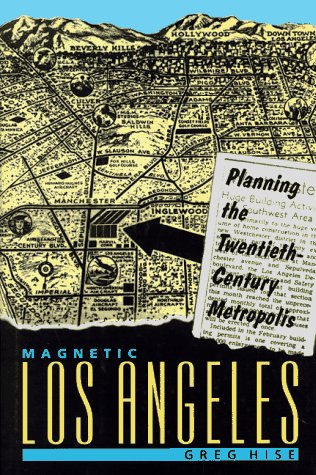Creating the North American Landscape
1 total work
Suburban development is often considered synonymous with enhanced personal mobility, single-family housing, and life-cycle homogeneity. According to this view, individual suburbs are residence-only enclaves, isolated commuter-sheds for a managerial and mercantile elite, while the expanding, 20th-century city is seen as sprawling, the product of dispersion without planning, lacking any discernable order. In "Magnetic Los Angeles" Greg Hise challenges these assumptions. The 20th-century metropolitan region, he argues, is in fact the product of conscious planning - by policy-makers, industrialists, design professionals, community-builders, and homebuyers - in direct response to political and economic conditions of the Depression, defence emergency and immediate postwar years. Hise explains how New Deal housing policies and the wartime location of manufacturing spurred the growth of satellite communities on the urban fringe. Here large-scale builders adopted and implemented formal principles and construction practices drawn from environmental reform, regional planning and the garden city movement. The book has three aims.
First, it places the history of city-building in California in a national context. Second, it explains the changing form of American cities during the 20th century using Los Angeles as a primary case study. Where other accounts focus exclusively on housing and homebuilding, this book reveals a significant rearrangement of urban functions, the concomitant dispersion of industry and commerce. The third, most ambitious, intention is to uncover and interpret the imaginative structures residents and scholars have devised for understanding American cities and thereby contribute to a reframing of current debates in urban theory.
First, it places the history of city-building in California in a national context. Second, it explains the changing form of American cities during the 20th century using Los Angeles as a primary case study. Where other accounts focus exclusively on housing and homebuilding, this book reveals a significant rearrangement of urban functions, the concomitant dispersion of industry and commerce. The third, most ambitious, intention is to uncover and interpret the imaginative structures residents and scholars have devised for understanding American cities and thereby contribute to a reframing of current debates in urban theory.
